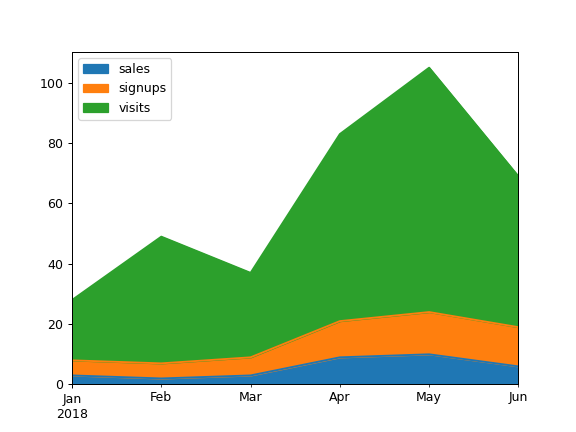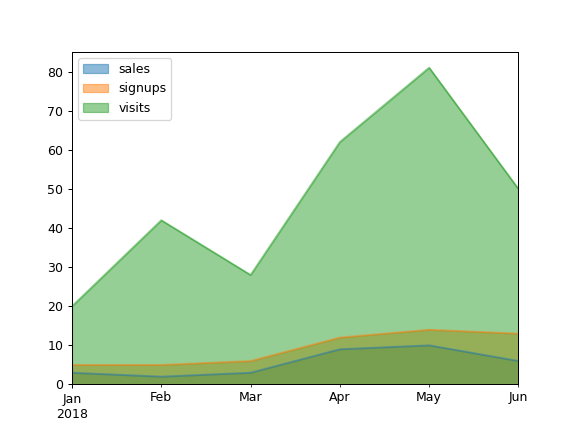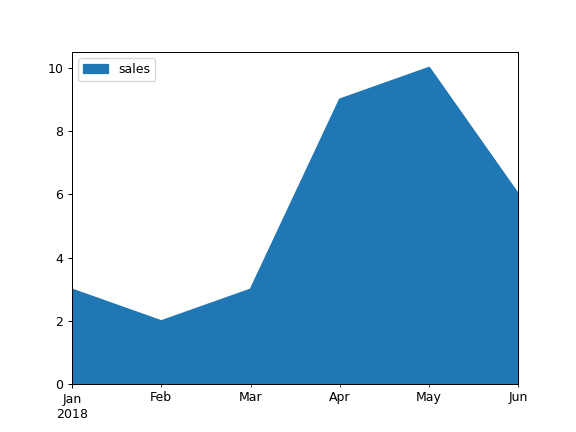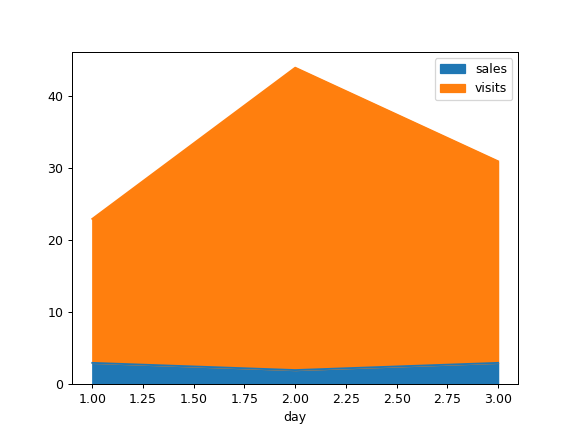pandas.Series.plot.area#
- Series.plot.area(x=None, y=None, stacked=True, **kwargs)[source]#
Draw a stacked area plot.
An area plot displays quantitative data visually. This function wraps the matplotlib area function.
- Parameters:
- xlabel or position, optional
Coordinates for the X axis. By default uses the index.
- ylabel or position, optional
Column to plot. By default uses all columns.
- stackedbool, default True
Area plots are stacked by default. Set to False to create a unstacked plot.
- **kwargs
Additional keyword arguments are documented in
DataFrame.plot().
- Returns:
- matplotlib.axes.Axes or numpy.ndarray
Area plot, or array of area plots if subplots is True.
See also
DataFrame.plotMake plots of DataFrame using matplotlib / pylab.
Examples
Draw an area plot based on basic business metrics:
>>> df = pd.DataFrame({ ... 'sales': [3, 2, 3, 9, 10, 6], ... 'signups': [5, 5, 6, 12, 14, 13], ... 'visits': [20, 42, 28, 62, 81, 50], ... }, index=pd.date_range(start='2018/01/01', end='2018/07/01', ... freq='ME')) >>> ax = df.plot.area()

Area plots are stacked by default. To produce an unstacked plot, pass
stacked=False:>>> ax = df.plot.area(stacked=False)

Draw an area plot for a single column:
>>> ax = df.plot.area(y='sales')

Draw with a different x:
>>> df = pd.DataFrame({ ... 'sales': [3, 2, 3], ... 'visits': [20, 42, 28], ... 'day': [1, 2, 3], ... }) >>> ax = df.plot.area(x='day')
